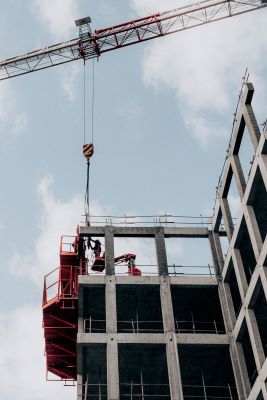 The “6-foot” rule is a general rule of thumb in the construction industry. Basically, it requires that fall protection be provided when work occurs at heights of six feet or greater above a lower level. It has been commonly perceived that fall protection requirements begin when workers are within six feet of an unprotected edge, and some OSHA inspectors have followed this as an accepted standard. In April 2020, the Occupational Safety and Health Review Commission issued a decision in a case that relates to this standard.
The “6-foot” rule is a general rule of thumb in the construction industry. Basically, it requires that fall protection be provided when work occurs at heights of six feet or greater above a lower level. It has been commonly perceived that fall protection requirements begin when workers are within six feet of an unprotected edge, and some OSHA inspectors have followed this as an accepted standard. In April 2020, the Occupational Safety and Health Review Commission issued a decision in a case that relates to this standard.
What Was the Occupational Safety and Health Review Commission’s Decision?
The Occupational Safety and Health Review Commission issued a decision in Secretary of Labor v. Precast Company. It found that the OSHA fall protections standard does not specifically require fall protection for workers within six feet of unprotected edges. This regulation can be found in the OSHA standards at 1926.501(b)(1). Rather, the Commission found that fall protection must be provided only when it is reasonably predictable that workers are, have been, or will be in the danger zone this standard was designed to prevent.
What Are the Legal Guidelines of 29 CFR 1926.501(b)(1)?
The OSHA regulation at 29 CFR 1926.501(b)(1) states that every employee on a walking or working surface with an unprotected side or edge that is six feet or more above a lower level shall have protection from falling. In Secretary of Labor v. Precast Company, an employer cited for failing to provide fall protection for employees working on the second floor of a building argued on appeal that the construction industry and countless Commission decisions have recognized that the 6-foot rule applies only when employees work six feet or less from unprotected edges six feet or more above the ground. The Commission found in its decision that 29 CFR 1926.501(b)(1) does not include a six-foot lateral rule.
When Is Fall Protection Required and What Is the Extent of the Zone?
The Occupational Safety and Health Review Commission found that there is no set lateral distance to define a danger zone for which fall protection would be required. Whether fall protection is needed must be determined on a case by case basis. The criteria for the fall protection requirement are that when it is reasonably predictable that employees have been, are, or will be in the zone of danger the “6-foot rule” safety standard can reduce the risk of a fall. This ruling could potentially change the way employers determine whether they are required to provide fall protection for workers.
What Types of Equipment and Structures Provide Fall Protection?
OSHA safety standards list three types of fall protection systems:
- Guardrail systems: Guardrails are a stationary system that serve as a physical barrier to help prevent worker falls from heights. They must meet certain OSHA requirements as to height, openings, the force they can withstand, and how they are installed. Guardrail systems must have smooth surfaces to protect workers from puncture or laceration injuries.
- Safety net systems: Safety nets are designed to limit fall distance from heights and help protect workers from injury. They are classified as passive fall protection and can be used either as barrier to prevent a fall or to catch a worker who has fallen.
- Personal fall arrest systems: These are systems designed to arrest a worker in a fall from a working level. They consist of anchorage, connectors, and a body belt or harness. A personal fall arrest system may include a lanyard, lifeline, deceleration device, or some combination of these features.
Why Does a Worker Who Has Fallen Need a Workers’ Compensation Attorney?
If you have suffered a workplace fall with serious injuries, you will need to recover the maximum compensation available for your medical expenses, lost wages, and other losses. Our experienced New York workers’ comp lawyers at Wingate, Russotti, Shapiro, Moses & Halperin, LLP can investigate your accident and pursue every avenue of compensation available to you. Call us today at (212) 986-7353 to schedule a free consultation.